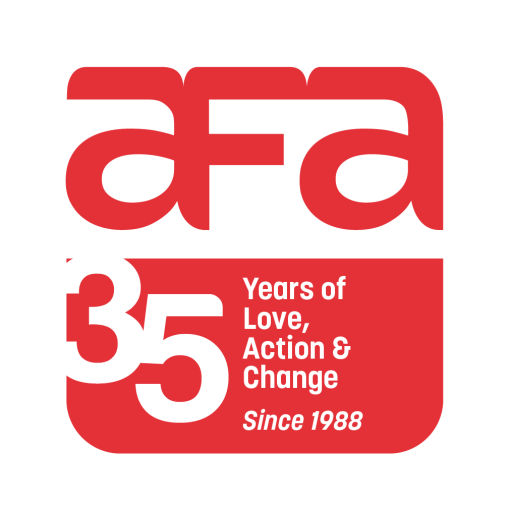Treat HIV like other diseases- 04 Dec 2008

MORE than two decades ago, the first acquired immune deficiency syndrome (Aids) patient was diagnosed here.
Since then, close to 4,000 people have been diagnosed as infected with the human immunodeficiency virus (HIV), the precursor to Aids.
In spite of all that has been done to contain its spread, the number of new infections grows each year. In 1997, there were 173 new cases. Last year, the figure had more than doubled to 423. The number this year will be higher still.
More than two in three are diagnosed when they are 50 years old or younger – in other words, while still in their prime and with many years of working life left.
Given the medicines available today, early treatment can provide these people with an almost normal lifespan. They can continue to contribute to society.
According to Dr Graeme Moyle, director of HIV research strategy at the Chelsea and Westminister Hospital in Britain, a 25-year-old man diagnosed with HIV can expect to live well into his 60s – with a lifespan just 10 years shorter than others.
More importantly, HIV patients can expect to lead a fairly normal and active life – provided they have access to the anti-retroviral medicines that can keep the virus at bay, and prevent them from acquiring full-blown Aids.
The problem is the high price of the medicine. The $1,500 a month needed to pay for the cocktail of drugs many need is more than what three in four HIV patients can afford.
And unlike other major illnesses where there is at least one, sometimes as many as a dozen, medicines available to the poor at highly subsidised prices, there is no Government subsidy at all for the treatment of HIV here.
The Ministry of Health’s argument against providing subsidised HIV medication is that such medicines do not provide a cure.
But the same could be said of medicines used to treat many other illnesses, such as diabetes, where the medicine merely controls blood sugar, preventing it from doing damage to the body.
Another argument is that the Government only provides subsidies for proven medicine. But some HIV medicines have been around for more than two decades and these drugs can no longer be classified as experimental.
The high cost of the medicines is also not a valid reason. Among the more expensive subsidised medicines today is one for hepatitis B. The Government pays half the cost of the medicine, which comes to more than $2,300 a month.
There is an underlying belief that people with HIV have only themselves to blame. HIV is transmitted via bodily fluids, usually through sexual intercourse.
HIV transmissions are more prominent among the gay community. Homosexuality is illegal here, and frowned upon by the majority of society. The more conservative ask whether society is obliged to help people who lead such a lifestyle?
This attitude needs to change – for two very good reasons.
First, not everyone who gets HIV has led a promiscuous life. There are growing numbers of men passing on the infection, which they may have caught from prostitutes, on to their wives and children.
There are about 40 children and youth with HIV. They are innocent victims. They should not be penalised.
And secondly, HIV is not the only disease caused by unhealthy lifestyles. Significantly more smokers than those who abstain suffer from lung cancer and chronic obstructive pulmonary disease. Heavy drinkers are far more likely to get liver problems.
Should subsidies for their treatment be withdrawn?
It is time that Singapore treated HIV/Aids sufferers like it does patients with other ailments, and provide them with subsidised medicine. Today, HIV is about the only major illness where patients do not enjoy any subsidies on medication.
The Ministry of Health’s recent emphasis on early diagnosis, with testing offered to all patients warded in public hospitals, is meaningless if it is not followed by proper treatment.
The Health Ministry will be spending $3.8 million over three years to subsidise the cost of screening these patients. Changi General Hospital, which started the scheme, has uncovered 35 new cases in its first six months.
With all the other hospitals now offering the scheme, the number of HIV-infected patients identified is set to go up.
At $1,500 or more a month, many HIV sufferers find the cost of the medicines which they have to take for the rest of their lives beyond their budgets. Patients are only allowed to withdraw only up to $550 a month from Medisave for such medicines.
Prices of anti-retroviral drugs in some neighbouring countries go as low as $100-$200 for a month’s supply.
But cheap drugs might not be the real thing. A recent drug bust spanning several South-east Asian countries netted $9 million worth of fake medicines, including those for HIV.
Patients on such medicines are putting their lives at risk. But for some, the prohibitive cost of the drugs here leaves them with no choice.
How can the Government expect to fight the disease when it discriminates against HIV patients by not providing them with the treatment that they need?
This is not about giving special privileges to HIV/Aids sufferers. It is about treating them like all other citizens in the country, with the same right to basic medical care.
Action for AIDS Singapore maintains all rights to these contents
If you see something that should not be here and would like us to remove or update, drop us a mail with the link or title of the content.
MEDIA: Please contact us for permission to use these contents.






